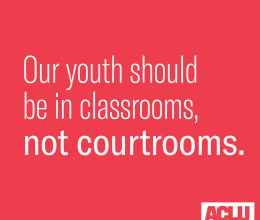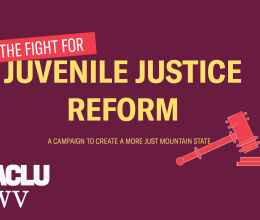
"We have to enact reforms to current juvenile justice policies and programs that seek to engage and support struggling families rather than punish them for not complying with court rules."
- Kathy Smith, Juvenile Justice Task Force Member & Barbour County parent advocate
Last week, the West Virginia Intergovernmental Task Force on Juvenile Justice issued a report and recommendations to reform the state’s juvenile justice system. I was honored that Gov. Tomblin appointed me to this task force and charged us with a critically important task: Addressing the crisis in our state’s juvenile justice system.
This crisis reaches beyond the obvious financial burden that the system places on West Virginia to the collateral damage that it inflicts on our youth. I commend Gov. Tomblin and the other members of the task force for taking this crisis head on.
As the task force reviewed data and research, it became very clear that our state’s juvenile justice system has gone in the wrong direction for years. Over the last 10 years, West Virginia has dramatically increased the number of young people charged with status offenses — acts that would not be a crime if committed by an adult.
Yet, research clearly shows that community-based diversion programs are much less costly and more effective than sending youth to the juvenile justice system.
The most troubling juvenile justice data involves the number entering the system for truancy. Although education is our youth’s pathway to success, our state is incarcerating youth for truancy, a practice that specifically increases their odds of failure.
From 2002-12, the number of children referred to court for status offenses, particularly truancy, climbed by 124 percent, and by 2012, truancy offenses accounted for 40 percent of all juvenile court referrals.
The task force analyzed data to peel back the layers of the juvenile justice system and exposed the driving force behind this astronomical increase: The change in West Virginia’s truancy statute.
In 2010, West Virginia got tough on truancy and passed legislation to lower the number of allowed unexcused absences from 10 days to a mere 5 days. Now, when a student has 5 unexcused absences, some schools send the child to juvenile court.
This law revision spurred a staggering 255 percent increase in judges referring status offenders, mostly truants, to out-of-home private placements. The average stay for these kids in these facilities is 15 months. Each child in an out-of-home placement costs the state on average $135,000 per year. This is the cost we can track. Research indicates that for any youth who spends more than 30 days in out-of-home-placement, their risks of becoming an adult offender are greatly increased. Doing nothing produces better outcomes then locking kids up.
While I believe most of the task force recommendations are steps in the right direction, the recommendations simply do not go far enough to provide for the best interest of West Virginia’s young people and the economics of this state. The recommended two-pronged diversion program to reduce the confinement of truant youth would have its greatest impact if schools implement the program before the threshold is met, such as after 5 unexcused absences, so that families can come up with workable solutions before the proposed 10 day limit. This gives young people and families’ time to correct the situation, without the devastating effects of separating children from their families and placing them in emergency shelters or private contracted facilities.
Young people become involved with the juvenile justice system for various reasons and come from various family backgrounds and education levels; nonetheless, when a child enters the court system, the entire family is in crisis. Working with the family to ensure that their child attends school is a key strategy to reducing truancy. While the task force does make recommendations for family engagement and education, they do not go far enough to change the culture of our juvenile justice system that currently separates children from their families.
Unfortunately, the report includes what I believe to be counterproductive recommendations to increase court sanctions for parents whose children have entered the juvenile justice system. Ultimately, if we want to improve outcomes for young people in our state, we have to enact reforms to current juvenile justice policies and programs that seek to engage and support struggling families rather than punish them for not complying with court rules.
Source: http://www.wvgazette.com/article/20141217/ARTICLE/141219316


